The Crow: From Unimaginable Tragedy To Icon
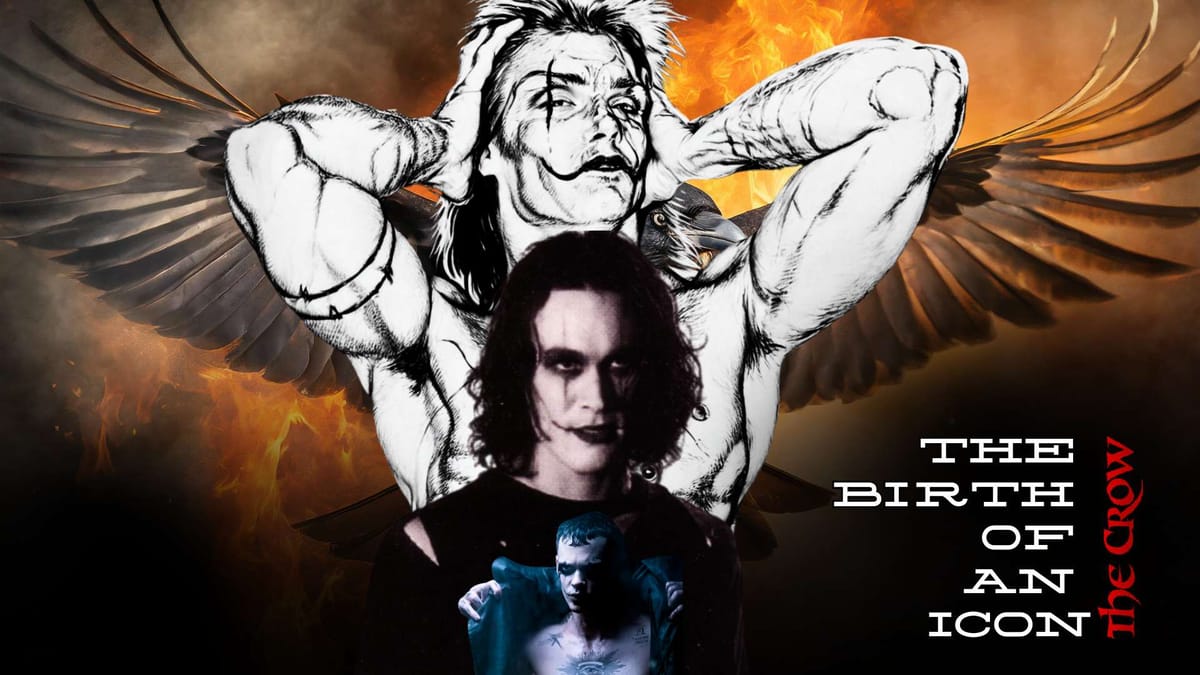
The Crow is more than just a beloved comic book or cult classic film. It's a haunting labour of love, an anguished cry given life by one man's deepest despair. Behind the gothic visuals and supernatural vengeance story lies the heart-wrenching tale of creator James O'Barr and the loss that drove him to create this iconic work.
The Birth of a Dark Icon
In 1978, O'Barr's world was shattered when his fiancée Beverly was senselessly killed by a drunk driver. Her death filled O'Barr with overwhelming guilt, rage, and grief—emotions he was all too familiar with from his traumatic childhood. Born in 1960 in Detroit, James O'Barr endured a childhood marred by abandonment, neglect, and abuse after his alcoholic mother gave him up for adoption at birth. He found solace in art, teaching himself to draw at a young age.
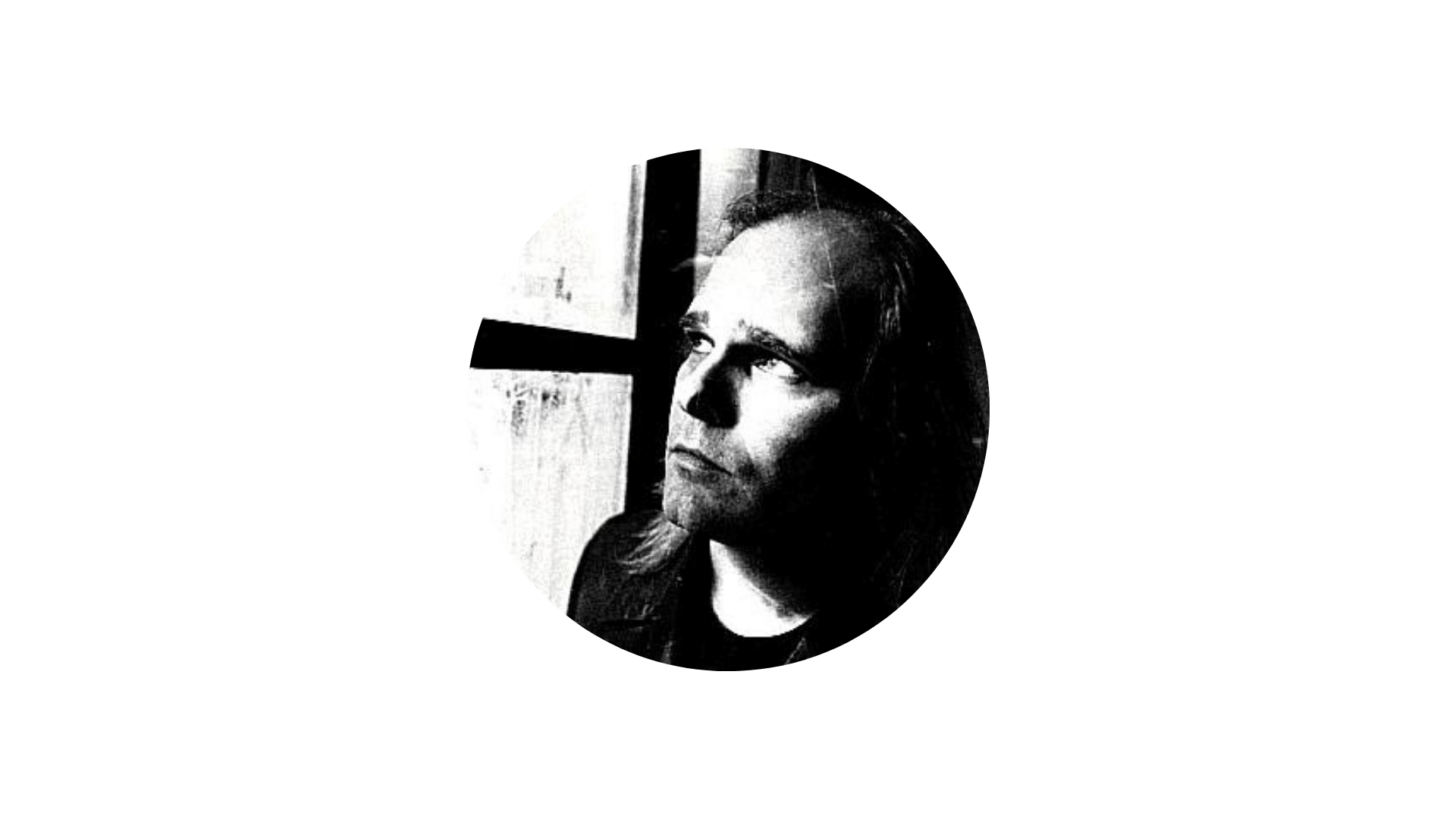
James O'Barr
Creator of The Crow
Meeting Beverly as a teenager was the first time O'Barr experienced true happiness and unconditional love. So when the unthinkable happened and Beverly was killed, O'Barr was sent into an even deeper well of anguish and despair than his childhood. As a form of emotional exorcism, he spent the next nine years painstakingly illustrating every ounce of his pain in The Crow's gut-wrenching tale of Eric Draven, a young man resurrected to avenge his own murdered wife.
What emerged from O'Barr's vivid imagination and tortured soul was a modern Gothic masterpiece. The Crow's bleak beauty, tragic romance, and thought-provoking themes about loss and vengeance quickly amassed a cult following. Its gritty, supernatural urban setting and antihero protagonist resonated with the alienated youth of the time.
Fascinating Interview with James O'Barr in 2000
The First Appearance of The Crow
The very first appearance of the Crow character was in the short story "Inertia," which served as a prequel to the main Crow comic series. In "Inertia," we are introduced to Eric for the first time as he is sitting on a train. He looks out the window and sees a beautiful white horse galloping alongside until it tragically gets tangled in a barbed wire fence in a bloody mess. This scene foreshadows Eric's own inability later to save his fiancée Shelly from a horrific fate.
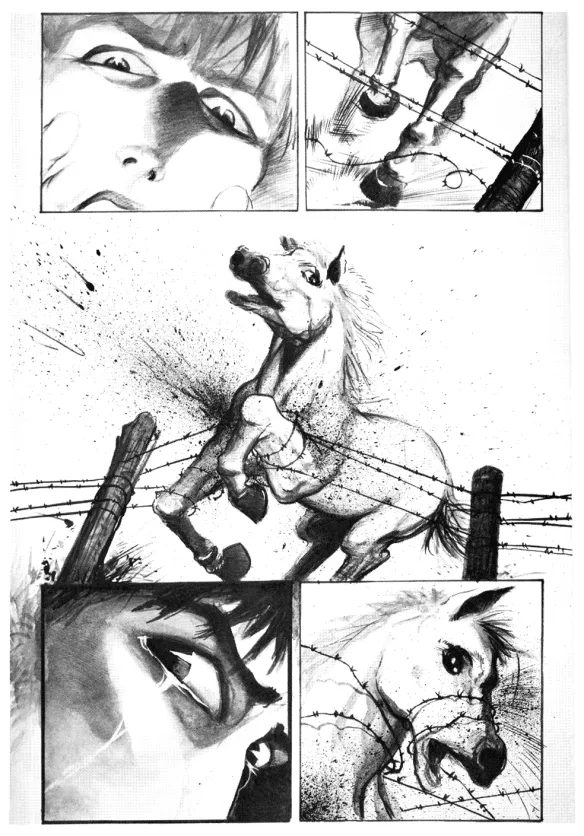
As Eric sheds a tear over the horse's death, a supernatural crow suddenly appears to him through the train window. This is our first glimpse of the mystical crow entity that will go on to guide and resurrect Eric. The crow doesn't speak at this point, but its presence is clearly symbolic of the tragic connection between death and rebirth that Eric will soon experience himself.
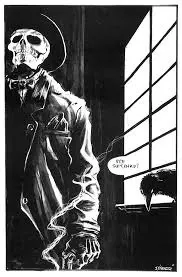
The Crow Graphic Novel: A Cult Classic
The Crow was first released as a comic book mini-series published by Caliber Comics in 1989. It consisted of 4 issues titled Pain, Fear, Irony, and Despair that were released between February and May 1989. Despite its independent roots, The Crow quickly became an underground success and cult hit amongst fans. It was praised for its unique gothic art style, mature storytelling, and tragic romantic tale.
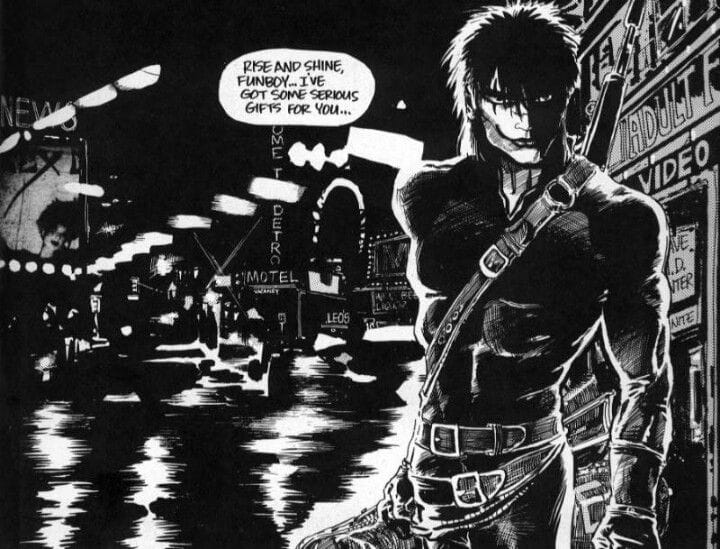

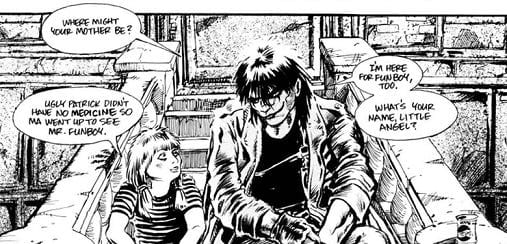
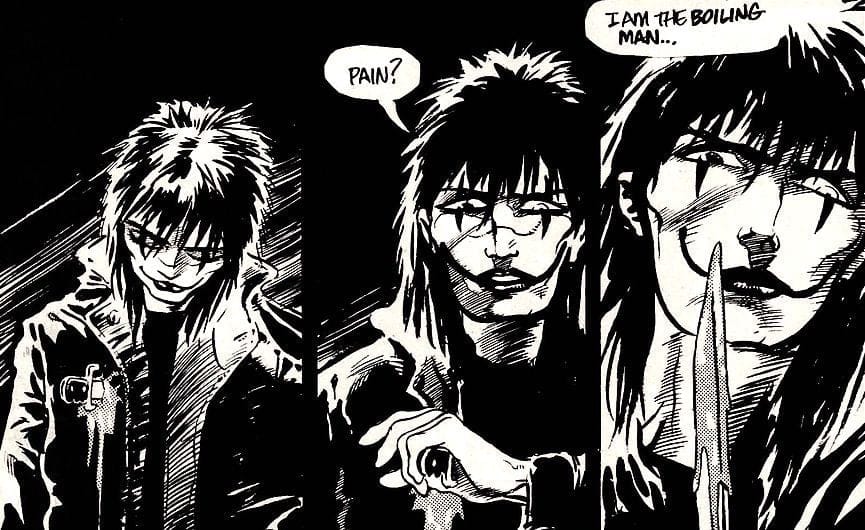
Illustrations from The Crow Graphic Novel
The Crow's aesthetic of death, tragedy, and romance resonated tremendously with the goth/emo youth culture of the late 80s and early 90s. O'Barr even joked that the "goth starter pack" included Doc Martens, a Cure album, and a copy of The Crow. The comic's brooding antihero, supernatural elements, and themes of grief and vengeance made it iconic within alternative subcultures. Beyond comics, The Crow's influence extended into fashion, music, and other media of the time.
The Crow Motion Picture: A Haunting Masterpiece
As The Crow comic books amassed a cult following in the early 1990s, it was inevitable that Hollywood would come calling. In 1994, Paramount Pictures hired director Alex Proyas and a cast led by rising star Brandon Lee to bring O'Barr's gothic masterpiece to the big screen.

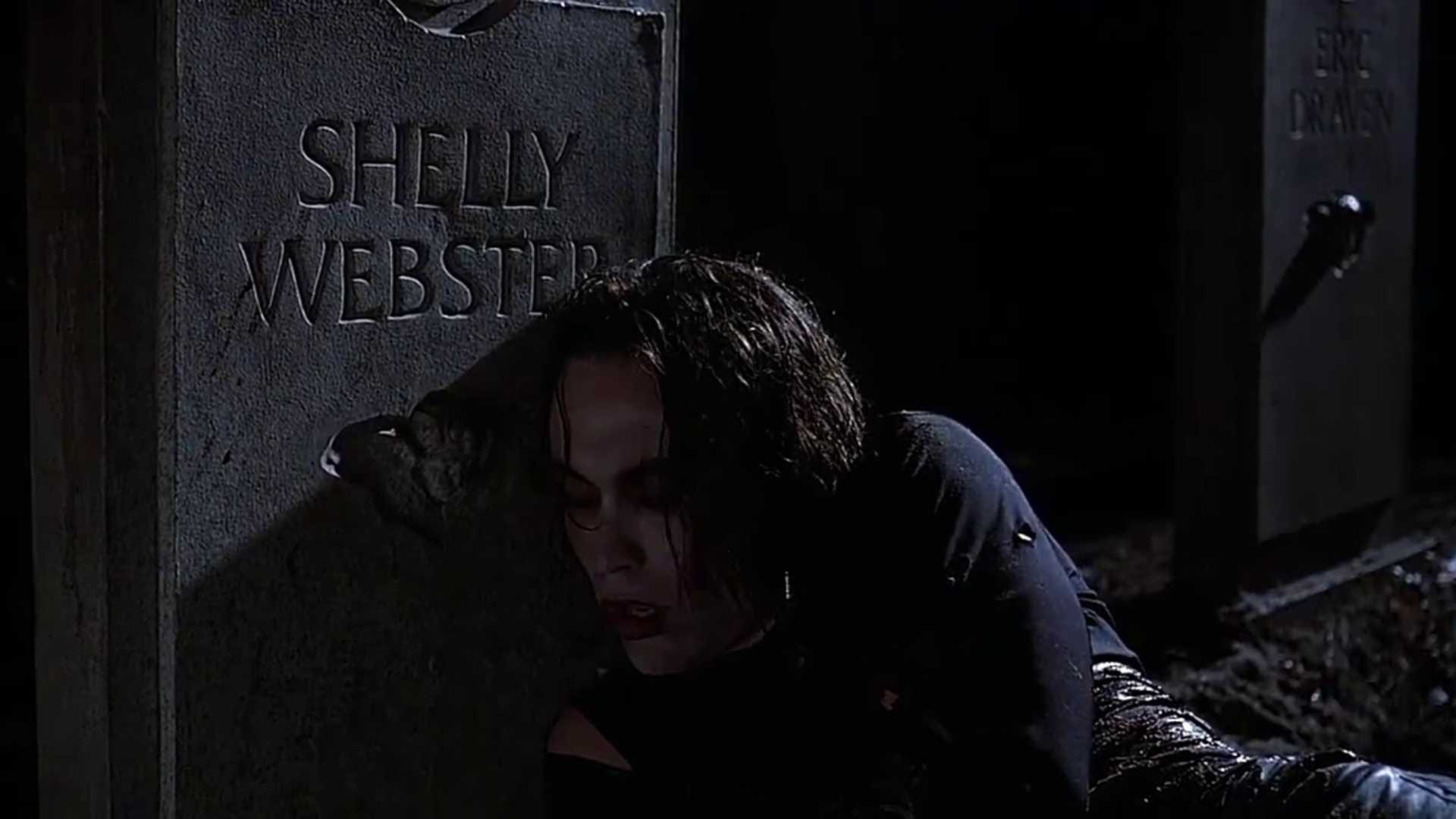
With a shoestring budget of just $23 million, Proyas crafted a visual wonder that stunned audiences and critics alike. The Crow's sumptuous production design, evocative cinematography, and haunting romantic ethos captured the essence of the comics. But it was Brandon Lee's mesmerising performance as tragic protagonist Eric Draven that elevated the film to instant icon status.
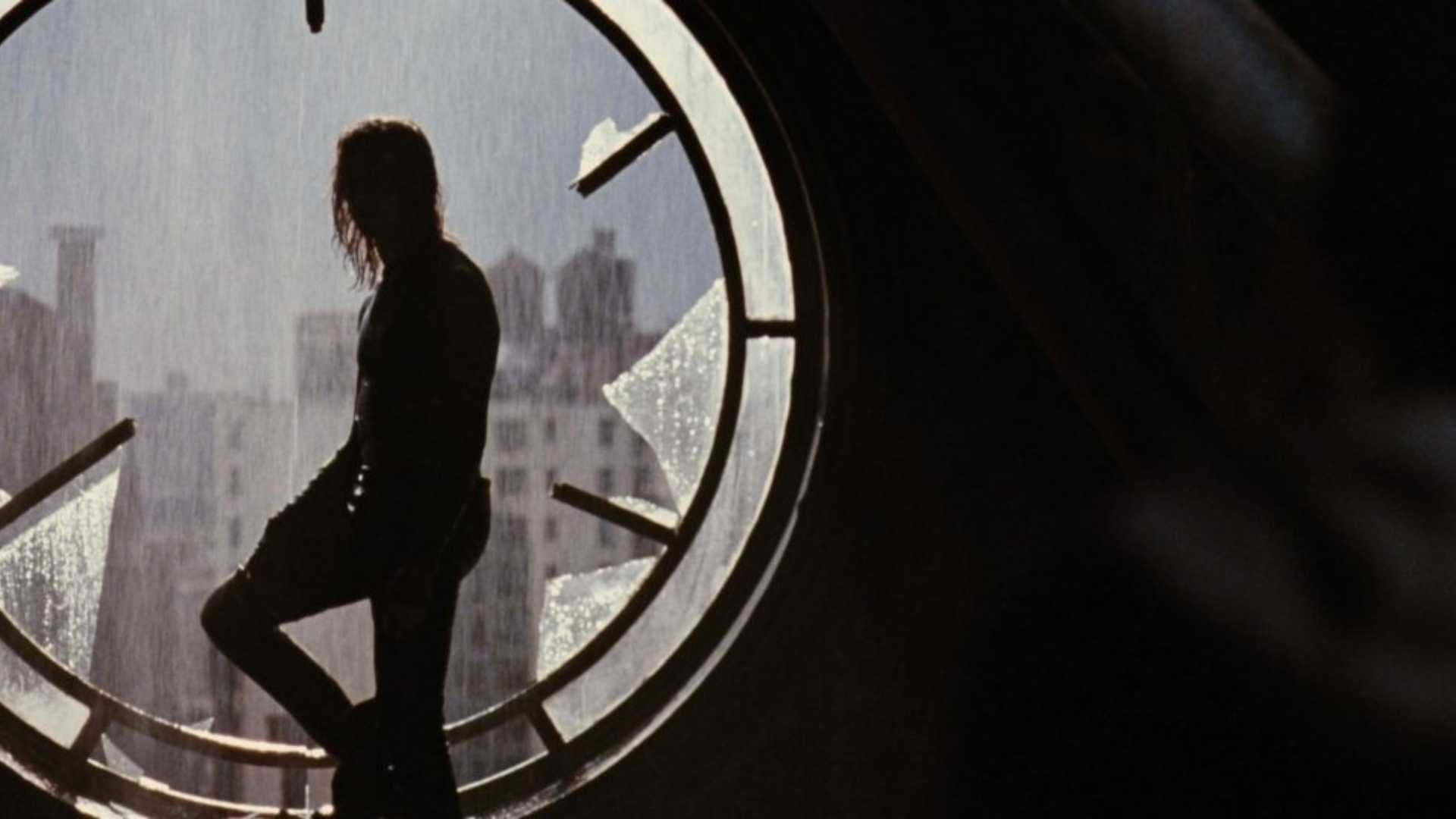
Tragically, Lee's all-too-fleeting big-screen role would be his last. In a devastating parallel to the source material, Lee was accidentally killed on-set when a prop gun mistakenly fired a dummy round into his abdomen. The agony of losing the promising 28-year-old actor mirrored the wrenching loss suffered by O'Barr and Eric Draven decades apart. Despite this horrific event, The Crow persevered and premiered in May 1994 to rave reviews celebrating its lush atmosphere, chutzpah, and most notably, Lee's captivating swan song.

The Iconic Soundtrack and Costume Design
The Crow's soundtrack is an integral part of the film's identity, expertly weaving together a tapestry of dark, atmospheric music that amplifies the movie's themes and emotions. The soundtrack features an impressive lineup of alternative rock, goth, and industrial artists, each contributing their unique sound to create a cohesive and immersive sonic experience.
The album opens with "Burn" by The Cure, a haunting and melancholic track that perfectly sets the tone for the film's exploration of love, loss, and vengeance. The song's sombre guitar riffs and Robert Smith's mournful vocals encapsulate the pain and longing that drive Eric Draven's quest for justice.
Another standout track is "Dead Souls" by Nine Inch Nails, a chilling and intense song that accompanies one of the film's most memorable scenes. The song's pounding drums and Trent Reznor's anguished screams mirror the chaos and turmoil that consume Eric as he confronts his foes.
The soundtrack also features "Golgotha Tenement Blues" by Machines of Loving Grace, an industrial rock anthem that pulsates with energy and aggression. The song's driving beat and distorted guitars provide the perfect backdrop for Eric's relentless pursuit of vengeance.
In addition to these standout tracks, the soundtrack includes contributions from other notable artists such as Stone Temple Pilots, Rage Against the Machine, and The Jesus and Mary Chain. Each song expertly captures the film's dark and brooding atmosphere, creating a seamless blend of music and visual artistry.
The Crow's soundtrack not only enhances the film's emotional impact but also stands as a powerful and influential work in its own right. The album has been praised by critics and fans alike for its innovative blend of genres and its unflinching exploration of dark themes. It remains a beloved and iconic piece of '90s alternative music, inspiring countless artists and fans in the years since its release.
Costume Design
Tasked with translating Eric Draven's iconic appearance from comic book pages to live-action, costume designer Arianne Phillips created a visual masterpiece. Her work on The Crow is rightly considered one of the most influential costume designs in modern cinema. Phillips took the graphic novel's simple concept for Eric's look and elevated it into a fully-realized, era-defining anti-hero aesthetic.

The Disappointing Attempts That Followed
While the original 1994 film adaptation of The Crow was a cult classic triumph, subsequent attempts to extend the franchise into sequels, remakes, and a TV series largely failed to recapture the magic and impact of that first cinematic outing. Without the pathos of Brandon Lee's haunting performance or the skilled directorial hand of Alex Proyas, these soulless cash grabs felt like hollow imitations stripped of the source material's melancholic essence.
A New-Age Fresh Attempt in 2024
The long-awaited and highly controversial remake of The Crow is finally set to hit theatres on June 7, 2024, nearly 30 years after the original cult classic film. While fans have been eagerly anticipating this new adaptation of James O'Barr's dark comic, the details that have emerged so far are cause for serious concern and disappointment.
2024's The Crow Trailer
The Crow comic and its brilliant 1994 film interpretation were bolts of lightning captured in a bottle—magnificent works of tragic poetry and visceral emotion that tapped into something primal about love, grief, and vengeance.
Both became generational touchstones, not just for their artistry but also for their ability to give voice to the anguish and emptiness that come with profound loss. They resonated so profoundly because they were labours of authenticity forged in the crucible of real human suffering.
In today's franchise-obsessed Hollywood, where art often takes a backseat to market-tested IP management, one can't help but fear that the 2024 Crow remake fundamentally misunderstands and cheapens the source material's delicate alchemy. Early signs suggest a reductive, superficial translation more enamoured with empty style and corporatized "universe-building" than capturing the essence of what made the original so haunting and iconic.


The Crow 2024

While the original crowed into being from a place of tortured passion, this remake runs the risk of emerging soulless and artistically inert—a hollow remix engineered from focus-grouped data points rather than a burning need to exorcise personal demons. For all its claimed grittiness, the 2024 Crow may simply be a prime example of modernity's inability to conceive of something as defiantly idiosyncratic as its predecessors in the age of franchise fiction.
I really hope the new rendition proves me wrong, recent attempts at revitalising classics however has left me less hopeful!
In the end, The Crow remains a haunting testament to the power of art to transcend personal tragedy and touch the hearts of millions. Whether in comic book or film form, its dark beauty and poignant themes continue to resonate with audiences around the world, serving as a reminder of the enduring power of love and loss.


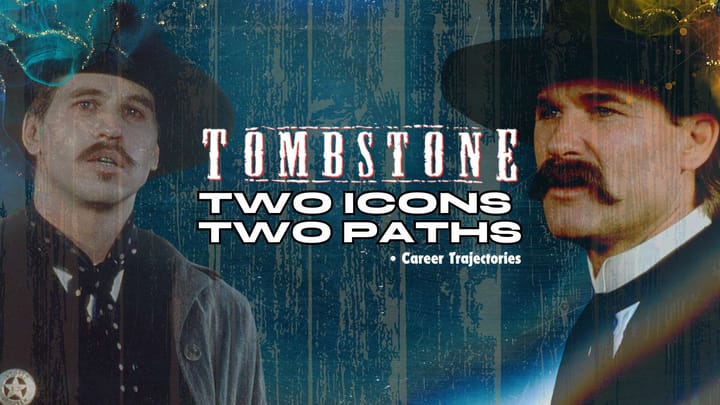
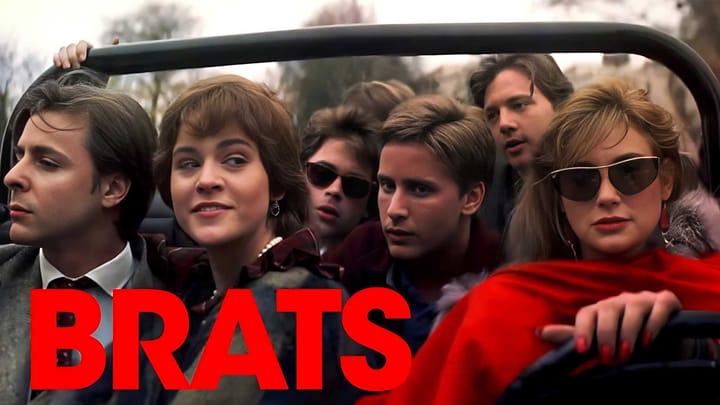
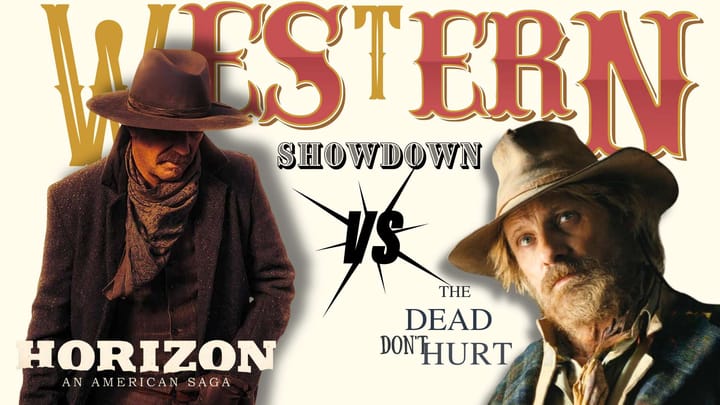
Comments ()